Five things we know from Scotland's alcohol death figures
- Published
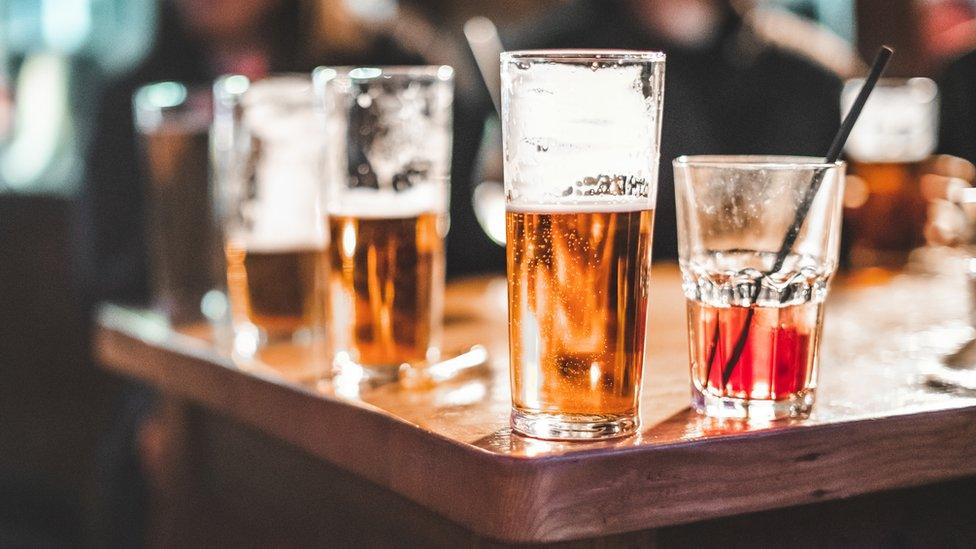
Alcohol-related deaths rose by 17% in 2020 and are now at the highest level since 2008. Is this increase a surprise, or does it follow recent trends? Here are five things we know from the National Records of Scotland report.

1. Average deaths have been rising for the past four years
Although the increase in deaths in 2020 does seem like a big jump, it follows the trend of the last few years when deaths have been mainly rising.
The increase of 17% seen in 2020 is partly down to the 10% drop in deaths Scotland recorded in 2019, which did go against the trend.
The number of alcohol-related deaths in Scotland rose to a peak in 2006 when 1,417 fatalities were recorded.
After that deaths mainly fell, reaching a low of 968 in 2012.
However, the moving five-year average of alcohol-related deaths has been going up every year since 2016.
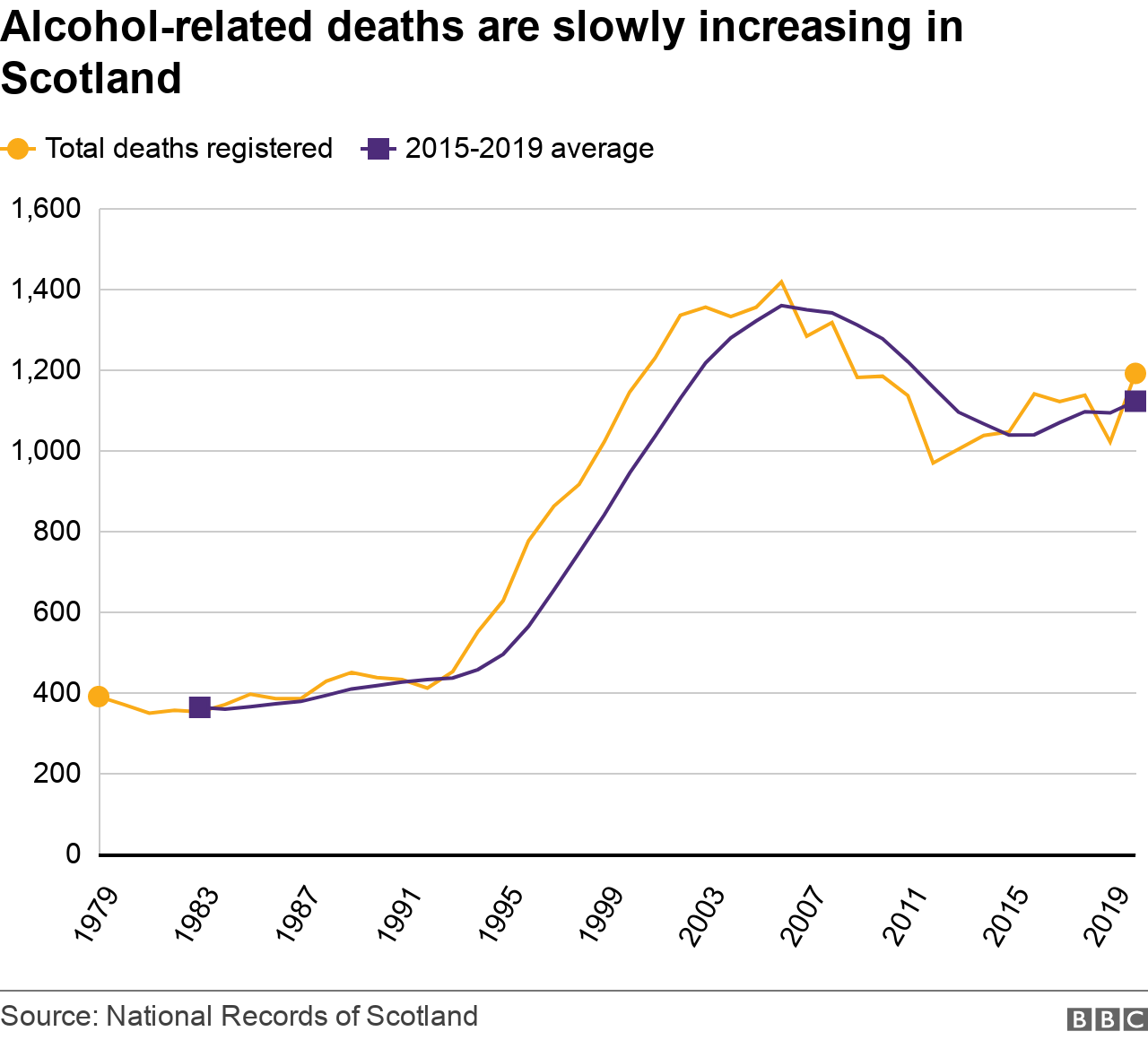
2. The worst months for deaths were unusual last year
In 2020, the months with the highest number of deaths were April, October and November, which each had 110 deaths.
This is a distinctive change from previous years, when the highest number of deaths were recorded in January, December and March.
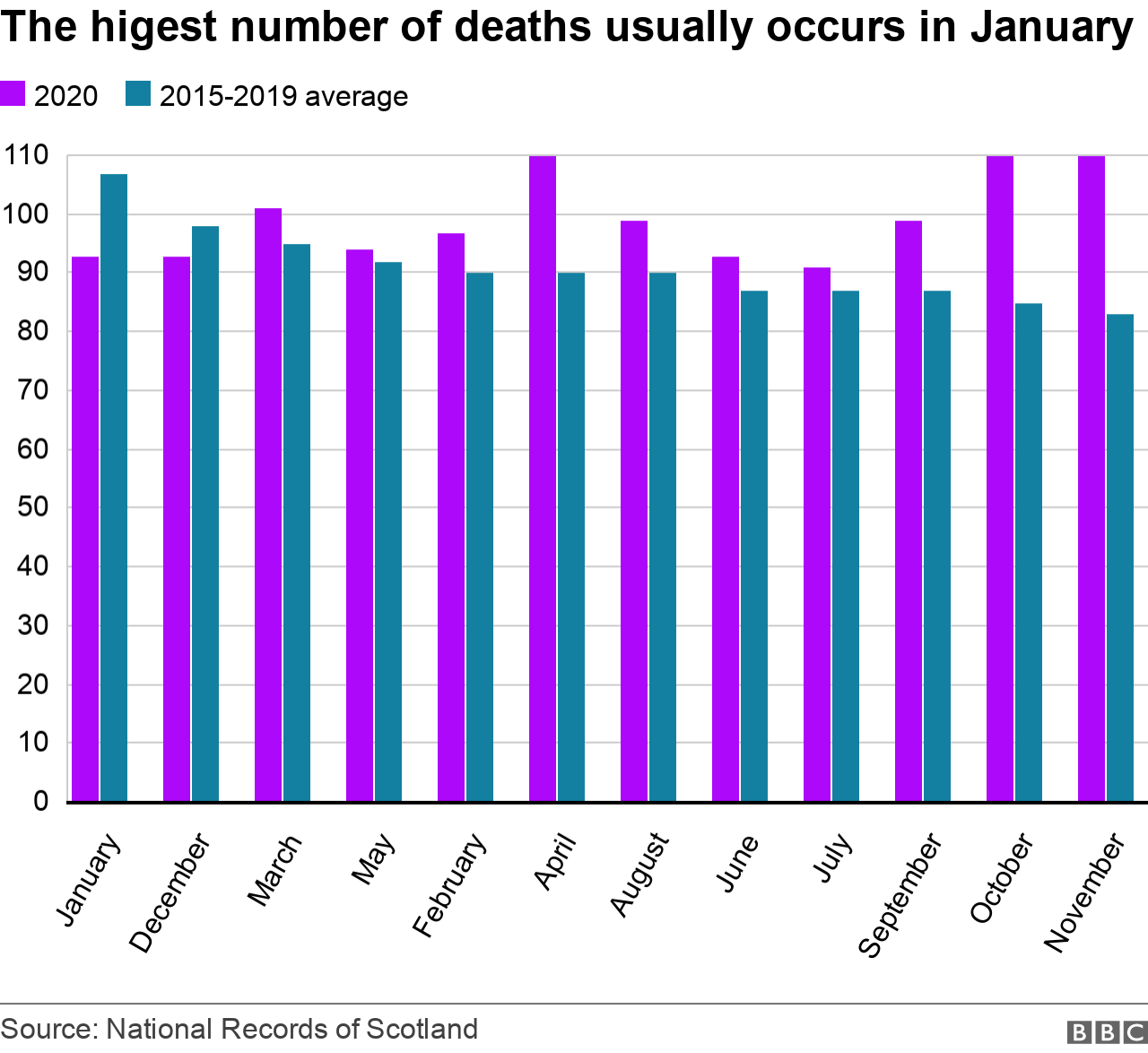
The autumn of last year recorded the highest number of "excess" deaths, with 27 more than expected in November and 25 more in October, when compared with the 2015-2019 average.
Although it is not possible to link the excess deaths to lockdown, the dates do coincide with the introduction of tough Covid measures at the start of the pandemic and the ramping up of restrictions last autumn.


3. The average age at death is 59
In 2020, there were two alcohol-related deaths in the 15-19 age group and five in the oldest age group of 90-plus.
However, most deaths were in the 60-64 age group - 206, according to the National Records of Scotland figures.
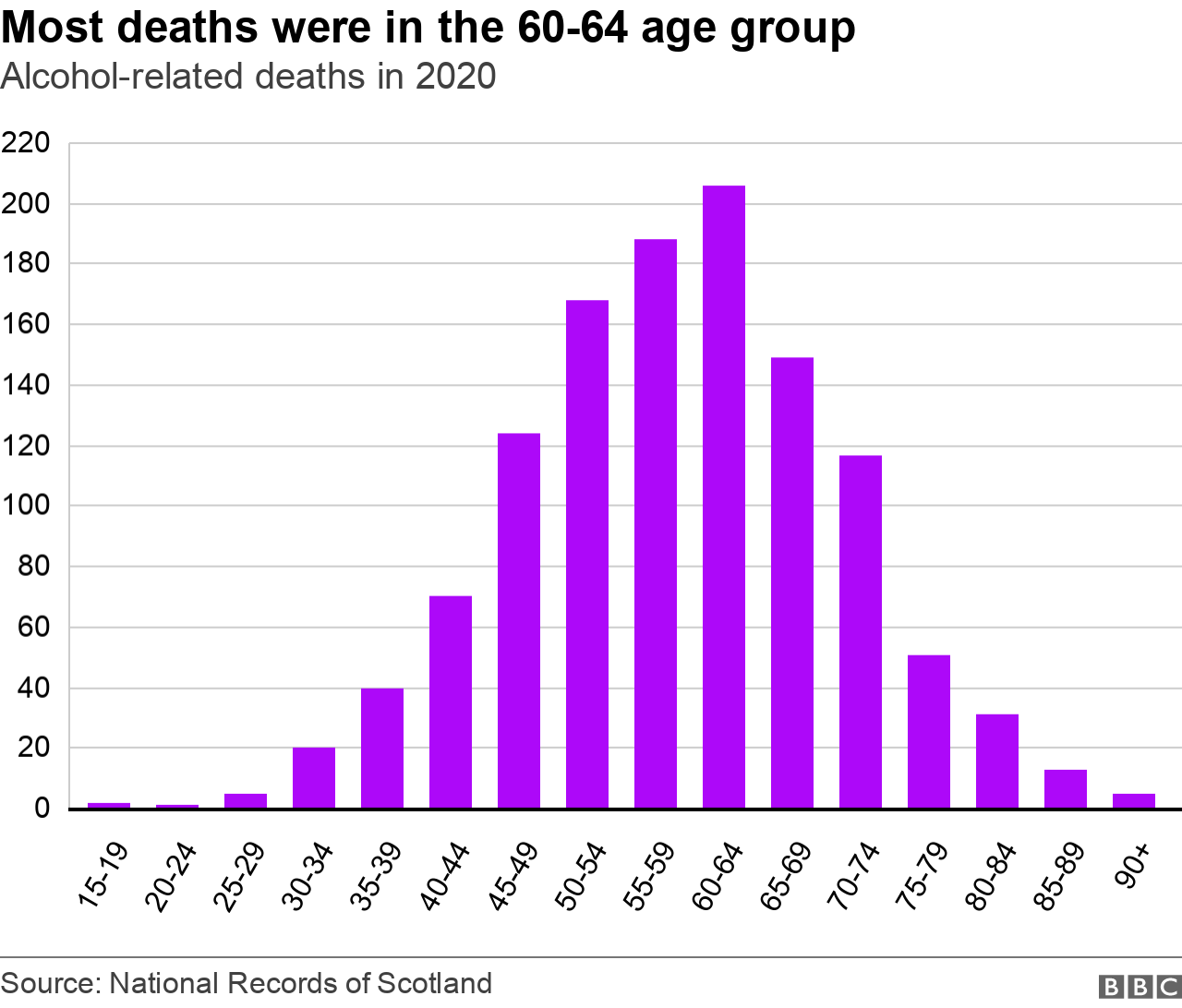
This is change from the previous six years, when most deaths occurred in the 55-59 age group.
In 2020, the average age at death was 59. This figure has been mainly rising since 2010, after fluctuating between 53 and 55 since the end of the 1970s.
4. Seven out of every 10 of the deaths were men
In 2020, there were a total of 1,190 alcohol-related deaths in Scotland - 826 of those were men and 364 were women.
This represents a split of 69.4% men to 30.6% women.
These proportions fluctuate year on year, but generally men are twice as likely to die from alcohol-related causes than women.
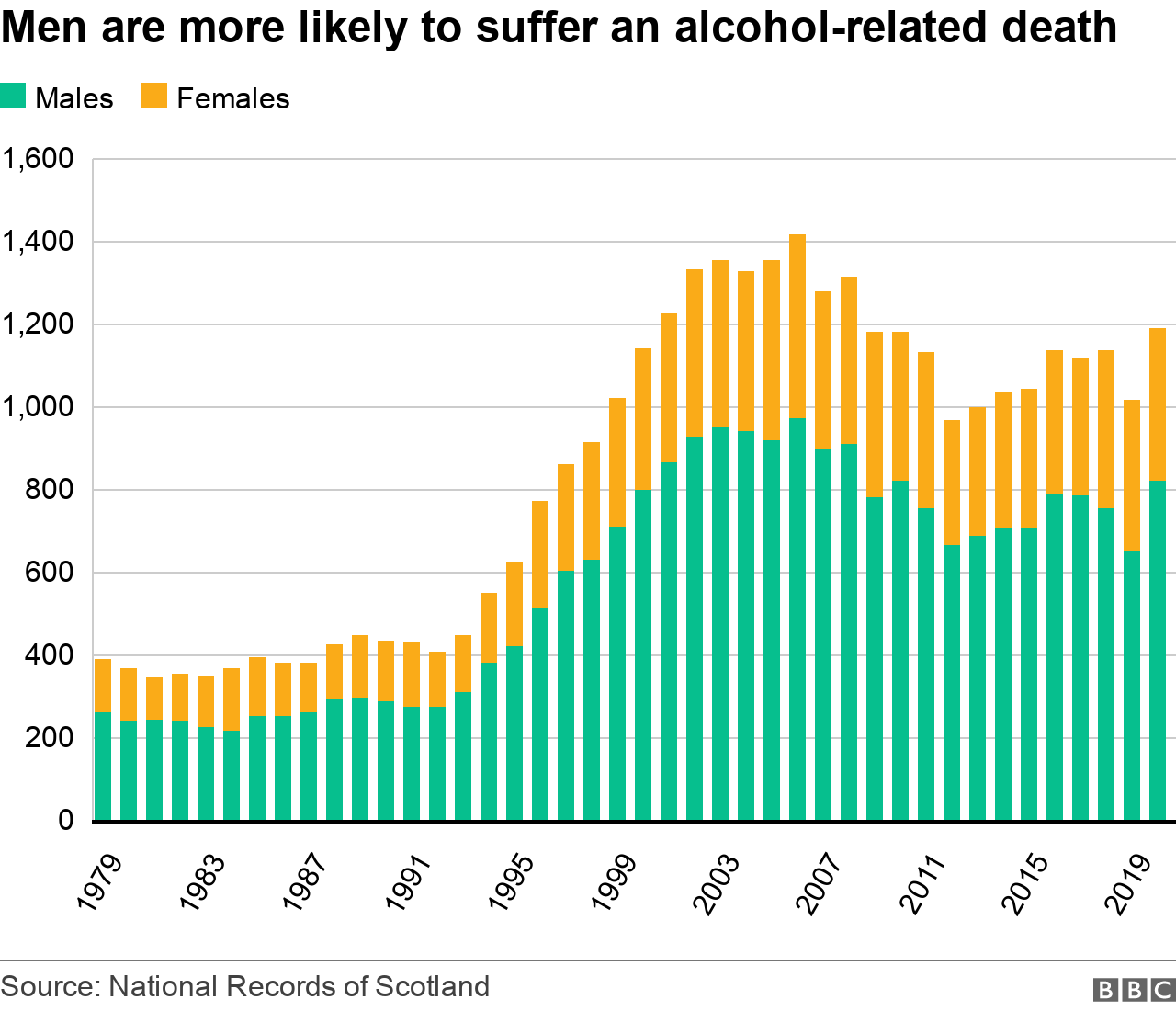
5. Inverclyde has highest death rate per 100,000 people
The average death rate per 100,000 people for the past five years for the whole of Scotland was 20.5
Eleven local authorities recorded a rate higher than this. Inverclyde is at the top of the table with a death rate of 31.6.
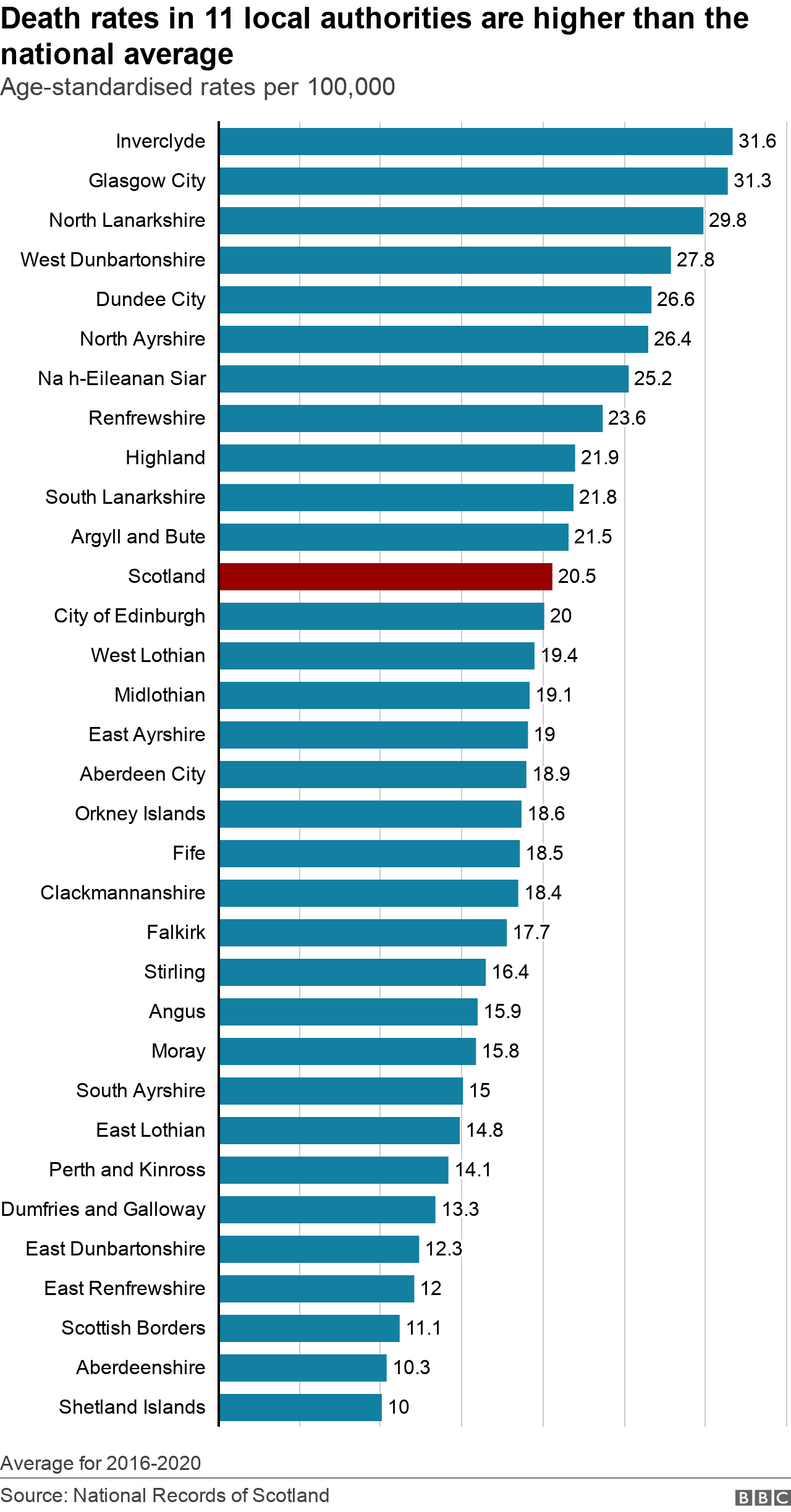
The NRS takes into account the age profile of each area, external when calculating the rates and each figure is a mid-point estimate within a range or "confidence interval".